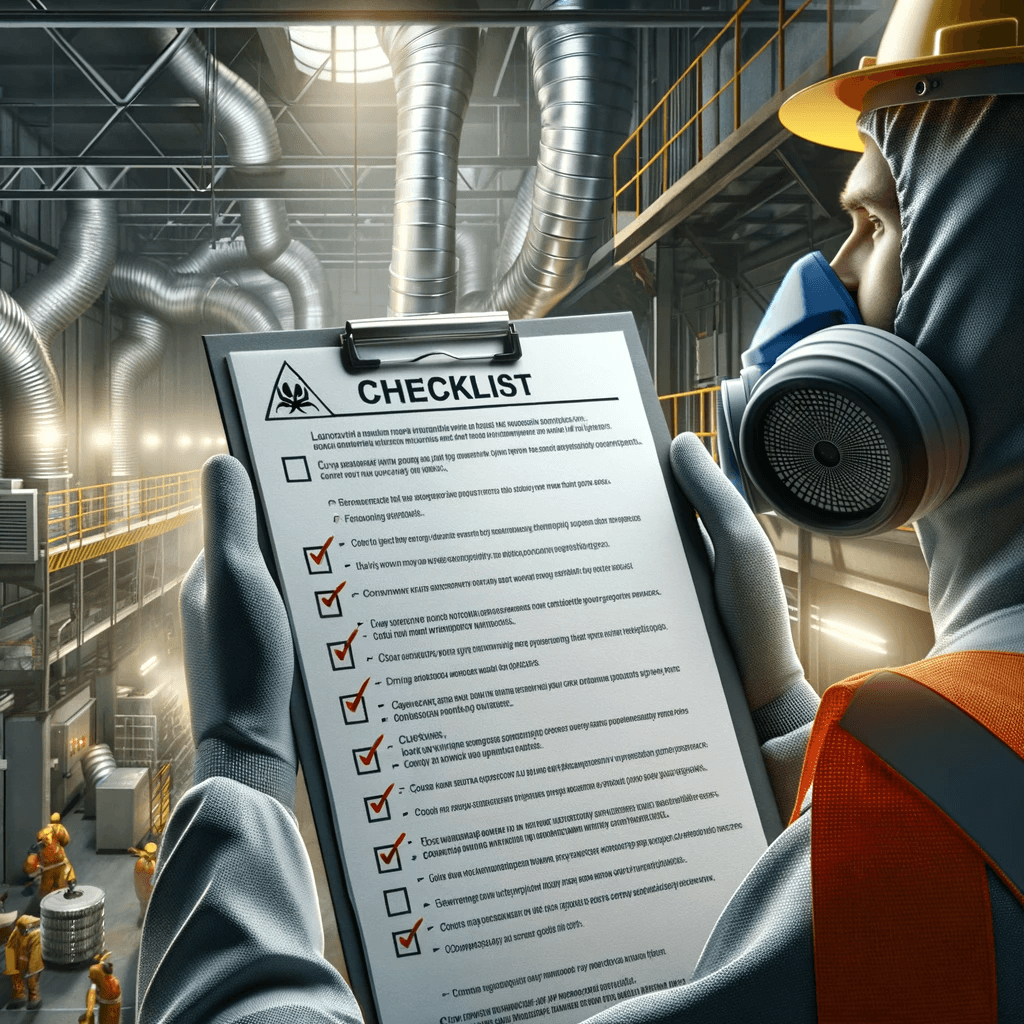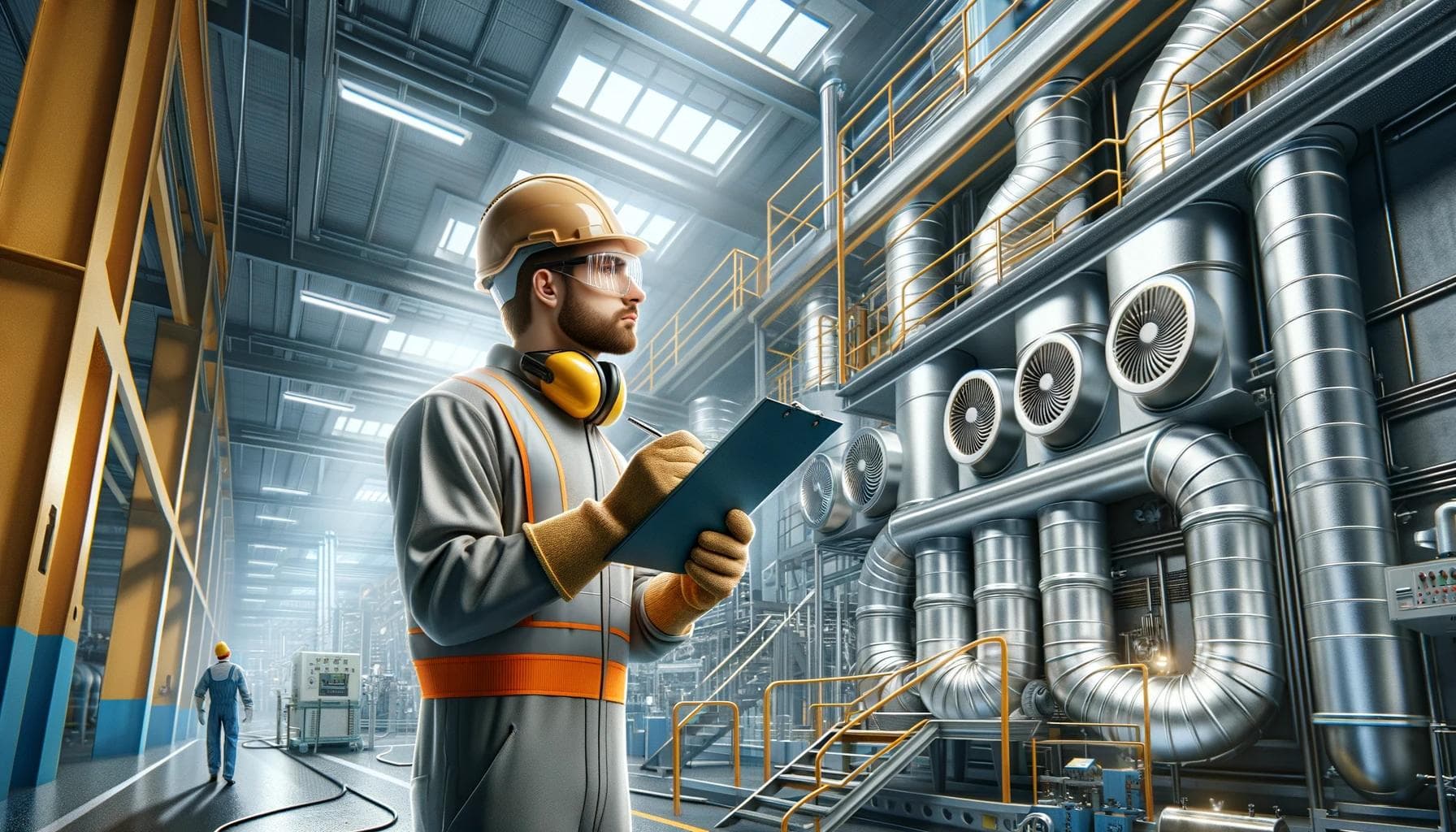Regulatory Compliance in LEV Design
Understanding the Importance of Compliance
When it comes to Local Exhaust Ventilation (LEV) systems, adhering to regulatory standards is not just a legal obligation but also a vital component to ensure the safety of your workforce and the efficiency of your operations. Such regulations are designed to protect employees from the harmful effects of dust, fumes, and other airborne contaminants that may be present in the workplace. Through the implementation of compliant LEV design, you ensure the continued health of your employees and the integrity of your industrial processes.
Key Regulations Governing LEV Systems
Several key pieces of legislation detail the requirements for LEV systems. The most prominent of these is the Control of Substances Hazardous to Health (COSHH) Regulations, which mandate the control of exposure to hazardous substances to prevent ill health. These regulations are supported by the Health and Safety Executive's (HSE) guidance notes, which provide practical advice on how to comply with the law.
Health and Safety at Work Act
The Health and Safety at Work etc. Act 1974 lays down broad general duties on employers, employees, contractors, suppliers, and designers of work equipment for the health and safety of all workers.
COSHH Regulations
The Control of Substances Hazardous to Health Regulations 2002 (as amended) specifically deal with the control of exposure to hazardous substances to prevent ill health. These regulations place specific demands on the design and testing of LEV systems.
HSG258 Guidance
HSG258 is the HSE's definitive guidance on the design, installation, commissioning, testing, monitoring, and maintenance of LEV systems. It offers valuable information on ensuring your LEV design is compliant with UK regulations.
Designing an LEV System for Compliance
Compliant LEV design must consider various factors to meet regulatory standards. These factors include the capture of contaminants at the source, the correct selection of hood design, and ensuring sufficient air volume and velocity for the adequate removal of hazardous substances.
Initial Assessment
An initial assessment is crucial to determine the type of LEV system suitable for your specific requirements. During this phase, identify the processes generating contaminants, the type of contaminants released, and the potential for exposure to workers.
Performance Criteria
LEV systems must be designed to meet certain performance criteria, which are governed by factors such as the volume and velocity of air required to effectively capture contaminants. It is essential to design a system that operates within these parameters to ensure compliance and effectiveness.
Regular LEV Testing
Under COSHH regulations, it is a requirement to conduct regular LEV testing and examination. This ensures that LEV systems are functioning correctly and continue to offer protection to your workforce. Tests must be completed at least once every 14 months, depending on the operations, and should be conducted by a competent person.
Ensuring Ongoing Compliance
Compliance is an ongoing process that requires attention to detail and regular monitoring. LEV systems should be seen as a fundamental part of your work environment's safety infrastructure.
Training and Awareness
Workers should be adequately trained on the operation of the LEV system and made aware of the importance of its role in maintaining a safe work environment. Employee awareness can be a determining factor in the continued effective operation and maintenance of the LEV system.
Maintenance and Documentation
Maintenance of the LEV system is not only a regulatory requirement but also essential to its longevity and effectiveness. Documenting the maintenance, repairs, and testing results of the LEV system is equally critical to demonstrating compliance during any inspections or audits.
Conclusion
Navigating the complexities of regulatory compliance in LEV design can be challenging, but it is a critical undertaking to protect your workforce and business operations. Partnering with experienced professionals who specialize in LEV design and maintenance can alleviate the burden of ensuring compliance. By investing in a compliant LEV system and prioritizing regular testing, training, and maintenance, you not only adhere to legal standards but also cultivate a safe and healthy workplace.
Incorporating these practices into your operations demonstrates a commitment to safety and a proactive approach to regulatory compliance. Remember, an investment in the health and safety of your employees is also an investment in the success and sustainability of your business.
FAQs
**What are the key regulations for Local Exhaust Ventilation (LEV) systems?** The main regulations for LEV systems include the Control of Substances Hazardous to Health (COSHH) Regulations, which require the control of hazardous substances to prevent ill health, and the Health and Safety at Work Act, which sets general duties for workplace health and safety. Additionally, the HSE’s HSG258 guidance provides detailed advice on designing, installing, and maintaining LEV systems to ensure they are compliant with UK laws. **Why is regular LEV testing important, and how often should it be done?** Regular LEV testing is crucial to verify that the system is working efficiently and continues to protect workers from airborne contaminants. Under COSHH regulations, this testing should be conducted at least once every 14 months or more frequently, depending on the operations. It must be carried out by a competent person to ensure the system meets performance criteria and regulatory standards. **How can employers ensure ongoing compliance with LEV system regulations?** Employers can ensure ongoing compliance by implementing regular monitoring, maintenance, and employee training. Properly maintaining the LEV system and keeping detailed records of maintenance, repairs, and test results are essential. Training employees on the operation and importance of the LEV system is also critical for the system’s effective operation and the overall safety of the work environment.
Key Takeaways
- Regulatory compliance is essential in the design and operation of Local Exhaust Ventilation (LEV) systems to protect employees from harmful airborne contaminants, ensure workplace safety, and maintain the efficiency of industrial processes. The primary regulations include the Control of Substances Hazardous to Health (COSHH) Regulations, the Health and Safety at Work Act, and the HSE's HSG258 guidance, which collectively set out the responsibilities for employers and the standards for LEV systems. - Designing an LEV system for compliance requires a thorough initial assessment of the processes and contaminants involved, followed by the creation of a system that meets specific performance criteria, such as adequate air volume and velocity. Regular LEV testing, at least every 14 months by a competent person, is mandated to ensure that the system continues to operate effectively and provides necessary protection. - Ensuring ongoing compliance is a continuous process that involves regular system monitoring, diligent maintenance, and comprehensive record-keeping. Equally important is the training and awareness of employees regarding the operation and significance of the LEV system, as this can significantly impact the system's effectiveness and the safety of the workplace. Compliance demonstrates a commitment to health and safety and is integral to the sustainability of a business.


